Overview:
The article focuses on identifying the top challenges faced in case studies of 3D renderings within architectural projects, which include time constraints, accuracy, customer expectations, software limitations, and multidisciplinary integration. These challenges significantly impact the quality and effectiveness of architectural visualizations, as evidenced by the article’s discussion of various case studies that illustrate how addressing these issues through collaboration, technology, and strategic planning can lead to improved project outcomes and client satisfaction.
Introduction
In the dynamic field of architectural visualization, the challenges faced by professionals in 3D rendering are both multifaceted and critical to project success. From stringent time constraints that threaten quality to the intricate dance of aligning client expectations with practical realities, these hurdles demand a keen understanding and strategic approach.
The evolving landscape of technology, including real-time rendering and AI-assisted design tools, offers promising solutions, yet the integration of these advancements necessitates collaboration among architects, engineers, and visualizers.
Through a detailed exploration of case studies and emerging trends, this article delves into the complexities of 3D rendering, highlighting the essential practices and innovations that empower architects to navigate these challenges and enhance the quality of their visual outputs.
Identifying Key Challenges in 3D Rendering for Architecture
In the realm of architectural visualization, professionals encounter several pressing challenges that can significantly impact project outcomes:
Time Constraints: Tight deadlines are a common issue, often compromising the quality of visual outputs. The pressure to deliver within constrained timelines can lead to rushed outputs that fail to meet the desired standards of excellence, underscoring the need for pre-sales visualization that instills confidence and generates investment early on.
Accuracy and Detail: Achieving photorealistic quality demands meticulous attention to detail—a process that is inherently time-consuming. High-quality architectural renderings must not only represent the architecture accurately but also capture the nuances that define a project’s character, which is essential for effective engagement and investment generation.
Customer Expectations: Balancing customers’ ambitious visions with practical limitations presents a significant challenge. Discrepancies often arise between what clients envision and what can be realistically achieved within the given constraints, necessitating effective communication and negotiation skills to align client vision with expert execution.
Software Limitations: The capabilities of visualization software can vary widely, with some tools struggling to handle the complexities of intricate architectural projects. This can lead to bottlenecks that obstruct the processing and diminish the overall quality of the output, highlighting the importance of selecting the appropriate tools for efficiency.
Integration with Other Disciplines: Ensuring seamless integration of visualizations with structural and mechanical designs often poses additional challenges. This multidisciplinary coordination is crucial for producing precise and comprehensive representations that align with the overall design intent.
These challenges in case studies of 3D renderings in architectural projects highlight the necessity for skilled professionals adept at navigating the intricacies of 3D visualization. A case study titled “Impact of Constraints on Architectural Design” illustrates how various constraints, including planning regulations and budget limitations, guide the design process both implicitly and explicitly. This case study serves as a real-world example of how architects can effectively address challenges in case studies of 3D renderings in architectural projects.
Furthermore, considerations for outsourcing 3D rendering can enhance business efficiency, enabling designers to focus on core design tasks while ensuring high-quality outputs. The FAQs concerning outsourcing emphasize key factors to consider, such as cost-effectiveness, access to specialized skills, and the ability to scale resources based on complexity. As design visualization continues to evolve, the ability to effectively address these challenges will remain paramount for lead architects striving for excellence.
Furthermore, turnaround times for design visualizations can differ greatly depending on project complexity, highlighting the significance of planning and resource distribution in attaining prompt and high-quality outcomes.
Case Studies: Real-World Challenges and Solutions in 3D Architectural Rendering
Numerous case studies illustrate the complexities and resolutions encountered in 3D architectural visualization:
Luxury Residential Project: A high-end residential initiative encountered challenges in case studies of 3D renderings in architectural projects, stemming from feedback on initial renderings, which led to discrepancies in expectations. Through a structured iterative feedback loop, which included regular check-ins and adjustments based on customer input, our design team, much like the collaborative planning at J. Scott Smith Visual Designs, significantly enhanced satisfaction and improved the accuracy of the final outputs. One customer remarked, ‘The attention to detail and responsiveness to our feedback transformed our vision into reality.’
Commercial Development: In a multifaceted commercial project, there were challenges in case studies of 3D renderings in architectural projects regarding the integration of mechanical systems within the architectural framework. The resolution resulted from coordinated teamwork with engineering groups, ensuring all elements were seamlessly integrated and precisely depicted in the renderings, reflecting our dedication to aligning visions with expert execution. A client stated, ‘The collaboration between teams ensured that our requirements were not only met but exceeded.’
Public Space Design: An initiative focused on public areas faced challenges in case studies of 3D renderings in architectural projects, particularly in effectively visualizing landscaping elements. This issue was addressed by utilizing advanced visualization software capable of real-time updates and adjustments, facilitating a more dynamic representation of the landscape. Feedback from stakeholders indicated that the visualizations helped in securing necessary approvals and community support, and this can be linked to the challenges in case studies of 3D renderings in architectural projects. The construction industry faces similar hurdles, such as the need for standardized methods for measuring concrete pumpability. Addressing these challenges is crucial for wider acceptance and effective implementation of 3D printing technology in construction. As Dalibor Barton pointed out, ‘The practical use of the method showed a 30% time saving, a decrease in workload and error rate in the whole process,’ highlighting the significance of efficiency in both design rendering and construction techniques.
These case studies illustrate the changing nature of design rendering and highlight the challenges in case studies of 3D renderings in architectural projects, emphasizing the need for flexible strategies that enhance communication with stakeholders and improve task execution. The INTERREG program for Italy and Switzerland, which ran from 2007 to 2013, serves as a relevant example of collaborative efforts in architectural design, demonstrating how cross-border partnerships can lead to innovative solutions and improved project outcomes. The testimonials from our clients reinforce the value of these collaborative efforts, showcasing how our dedication to personalized service and innovative problem-solving leads to exceptional results.
Leveraging Technology to Overcome 3D Rendering Challenges
The integration of cutting-edge technology is essential for overcoming the challenges associated with 3D rendering in architecture. Notable advancements include:
Real-time Rendering Software: Platforms such as Unreal Engine and Lumion offer immediate visual feedback, drastically reducing the time required for revisions.
This capability transforms prospects from mere onlookers into active participants in their future homes, fostering a deeper connection to the endeavor and community. Architects can refine their designs in real-time, resulting in more efficient workflows and enhanced design accuracy. As these tools gain traction globally, regions like North America and Europe are leading the charge in their adoption.Cloud Rendering Services: By leveraging cloud computing resources, architects can significantly enhance their processing capabilities. This allows the management of complex tasks without being limited by local hardware constraints, thus enhancing productivity and turnaround times.
According to research expert Lionel Sujay Vailshery, ‘Get in touch with us now’ to explore how cloud computing is transforming design practices.AI-Assisted Design Tools: The emergence of AI technologies in architectural design automates repetitive tasks, allowing designers to focus on more creative and strategic aspects of their projects.
This shift not only enhances productivity but also fosters innovation within design teams, particularly in regions like Asia Pacific where tech adoption is accelerating.Virtual Reality (VR): The application of VR technology provides immersive experiences that enable users to engage with designs before construction begins.
This interaction minimizes misunderstandings and fosters clearer communication of design intentions. Encouraging feedback and collaboration at every stage of the process ensures alignment with the customer’s vision. Notably, while women account for 27% of licensed U.S. architects, they are increasingly utilizing these technologies to enhance their design processes and client interactions.
Moreover, delivering clear and timely information is essential in construction endeavors to optimize time and cost. Architects should ensure they communicate necessary details early on, whether working from extensive construction sets or simple sketches. By strategically utilizing these technologies and highlighting the significance of timely information, architects optimize workflows and enhance the overall quality of their visualizations, ultimately leading to more successful outcomes.
Furthermore, with 64% of staff architects majoring in architecture, the integration of these advancements into educational curricula is vital for future success.
The Role of Collaboration in Navigating 3D Rendering Challenges
Collaboration stands as a cornerstone in successfully navigating the intricate landscape of 3D rendering within architectural endeavors. Effective collaboration among architects, engineers, and visualizers significantly enhances results, particularly through the use of 3D visualizations that facilitate clear communication and early resolution of design issues. The following key strategies exemplify best practices in fostering collaborative environments:
- Regular Meetings: Establishing consistent communication channels ensures that all stakeholders remain aligned with objectives and timelines, promoting a unified vision.
- Shared Platforms: The adoption of collaborative software, particularly Building Information Modeling (BIM), plays a vital role in fostering transparency throughout the project lifecycle. BIM enables real-time updates, facilitating informed decision-making and enhancing coordination among teams.
- Feedback Mechanisms: Implementing structured feedback processes captures diverse insights from various disciplines. This practice not only enriches the final output but also encourages a culture of continuous improvement, fostering strong client relationships through iterative engagement.
- Cross-Disciplinary Workshops: Participating in workshops that unite specialists from various fields encourages creative solutions to obstacles. These interactions often lead to breakthroughs that can redefine trajectories and enhance storytelling in visualizations.
- Utilizing Traditional Sketching Environments: Incorporating traditional sketching techniques can benefit problem-solving and negotiation, providing a tactile approach that complements digital workflows.
- Immersive Environments: Leveraging immersive environments can reduce cognitive effort in exploring designs, allowing teams to visualize concepts more effectively and enhance collaborative discussions.
- Detail Levels in 3D Rendering: Emphasizing the importance of detail levels in 3D rendering is crucial for accurate representation and client satisfaction. High-quality visualizations that reflect intricate details can significantly influence decision-making and specifications.
By prioritizing collaboration, architectural teams can adeptly confront challenges and consistently achieve high-quality results. Notably, a recent survey revealed that 76% of owners engaged key stakeholders during the conceptualization phase of their most successful endeavors, compared to merely 34% for typical endeavors. Such statistics underscore the positive impact of collaborative practices on project success.
Additionally, real-time visualization has been acknowledged as an essential tool for improving speed and efficiency in design workflows, assisting in decision-making and collaboration despite difficulties with software integration. Sandeep Gupte, Senior Director of Professional Visualization at NVIDIA, asserts,
With Exxact solutions now supporting Omniverse Enterprise, engineers and designers can be confident that they have the performance to accelerate their workflows to keep up with industry demands, while simultaneously connecting their globally dispersed teams.
This emphasizes the increasing necessity for efficient cooperation in design visualization as we approach 2024.
Future Trends: Innovations in 3D Rendering for Architecture
The design visualization landscape is on the brink of transformation, with several pivotal trends poised to redefine the industry:
Increased Use of AI: Artificial Intelligence is set to significantly enhance visualization processes, particularly in creating lifelike CG humans that bridge the uncanny valley in architectural visualizations. With 55% of surveyed participants actively exploring AI-driven solutions, the integration of these technologies is becoming indispensable. AI-powered visualization tools enable architects to create high-quality images quickly and provide real-time rendering for instant feedback, facilitating a focus on design refinement instead of extended render times. By utilizing AI, architects can showcase polished designs to stakeholders nearly immediately, ensuring the visualizations are not only realistic but also customized to specifications.
Augmented Reality (AR): The advent of AR technology is expected to revolutionize presentations, providing interactive experiences that merge digital representations with physical environments. This technological synergy enhances engagement and fosters a more intuitive understanding of design concepts, allowing clients to visualize projects in a lifelike context.
Sustainable Practices: As the industry transitions to more conscientious methods, innovations aimed at minimizing the environmental impact of processing techniques are gaining momentum. This includes adopting energy-efficient software and eco-friendly materials, aligning architectural visualization with sustainability goals while improving perceptions of architectural spaces. By incorporating sustainable practices into design processes, architects can create designs that are both visually appealing and environmentally responsible.
Advanced Simulation Techniques: Future advancements are anticipated to refine the simulation of lighting and materials, pushing the boundaries of photorealistic depiction. Such innovations will enable architects to create more immersive and accurate visualizations, showcasing designs in their most compelling form, while emphasizing texture and durability in both interior and exterior materials.
Customization and Revisions: The function of customization and revisions in producing endeavors is crucial for assessing the investment in distinctive visualizations. Tailoring visualizations to meet specific client needs and expectations not only enhances satisfaction but also ensures that the final product aligns with the envisioned outcome.
By remaining attuned to these trends, architects can strategically position themselves to leverage emerging technologies and enhance their project results, ultimately shaping the future of architectural visualizations. High-quality renderings are not merely aesthetic; they are crucial for informed decision-making and building excitement about what’s to come.
Conclusion
The complexities of 3D rendering in architecture present a multifaceted array of challenges that demand strategic navigation by professionals in the field. From managing tight deadlines and ensuring accuracy to aligning client expectations with practical realities, the hurdles faced are significant. As highlighted, the integration of cutting-edge technologies such as real-time rendering software, cloud services, and AI-assisted design tools offers promising solutions that can enhance workflow efficiency and project outcomes.
Case studies demonstrate the effectiveness of collaborative approaches in overcoming rendering challenges. By fostering strong communication and utilizing advanced software, architects can produce high-quality visualizations that resonate with client visions and project requirements. The importance of teamwork across disciplines cannot be overstated, as it leads to innovative solutions and improved project execution.
Looking ahead, the architectural visualization landscape is poised for transformation through the adoption of sustainable practices, advanced simulation techniques, and the increasing role of augmented and virtual reality. As architects embrace these innovations, they will not only enhance the quality of their visual outputs but also contribute to a more sustainable and engaging built environment.
Ultimately, mastering the art of 3D rendering is essential for architects striving for excellence. By leveraging technology, embracing collaboration, and staying attuned to emerging trends, professionals can navigate the challenges of 3D rendering and elevate their practice to new heights, ensuring that architectural visions are realized with precision and creativity.
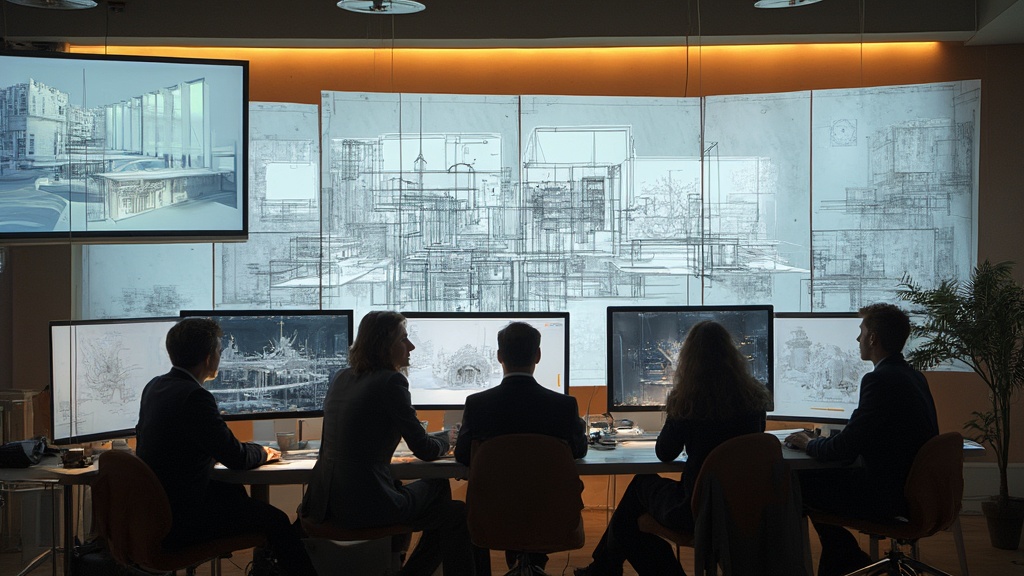
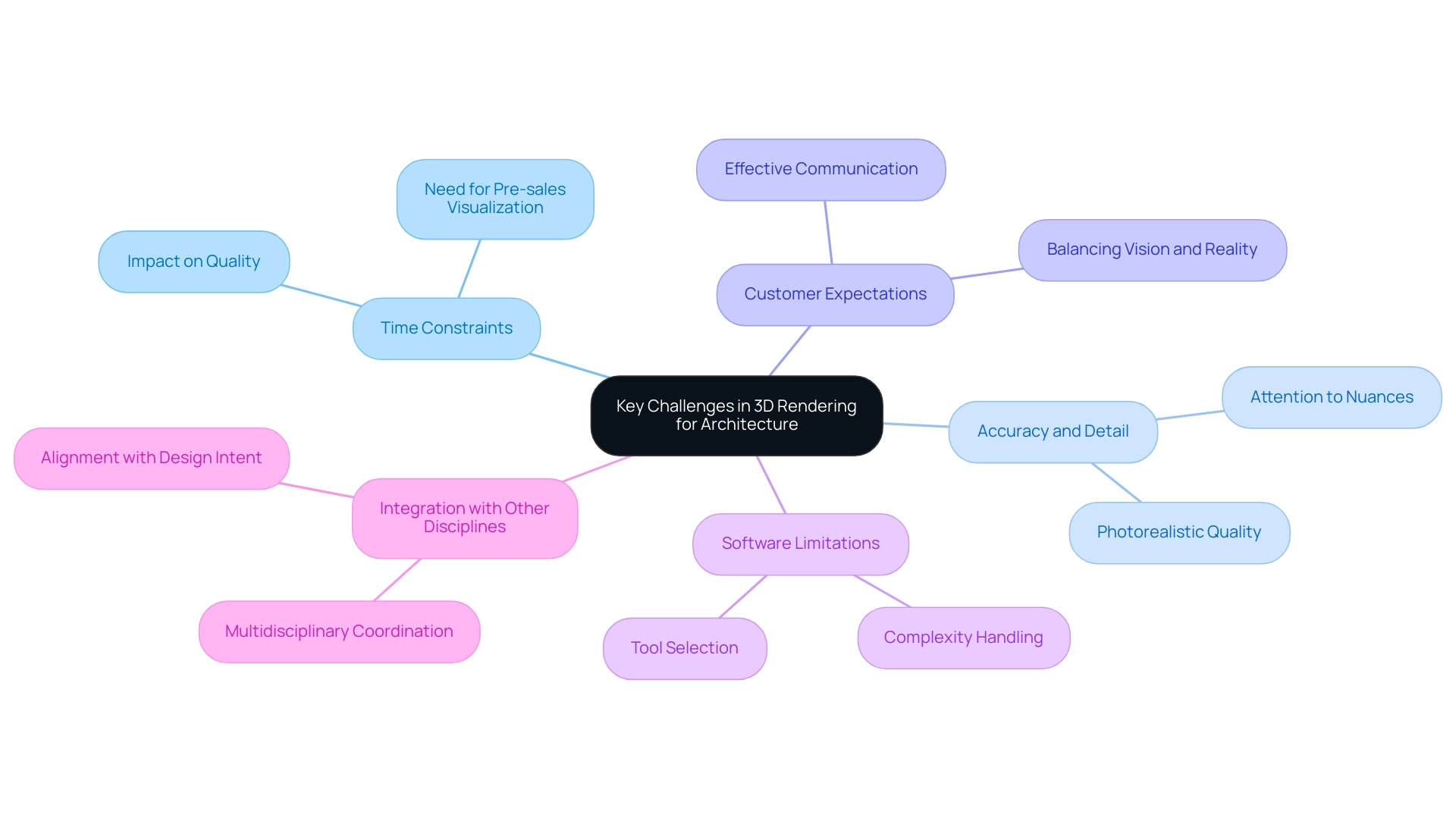
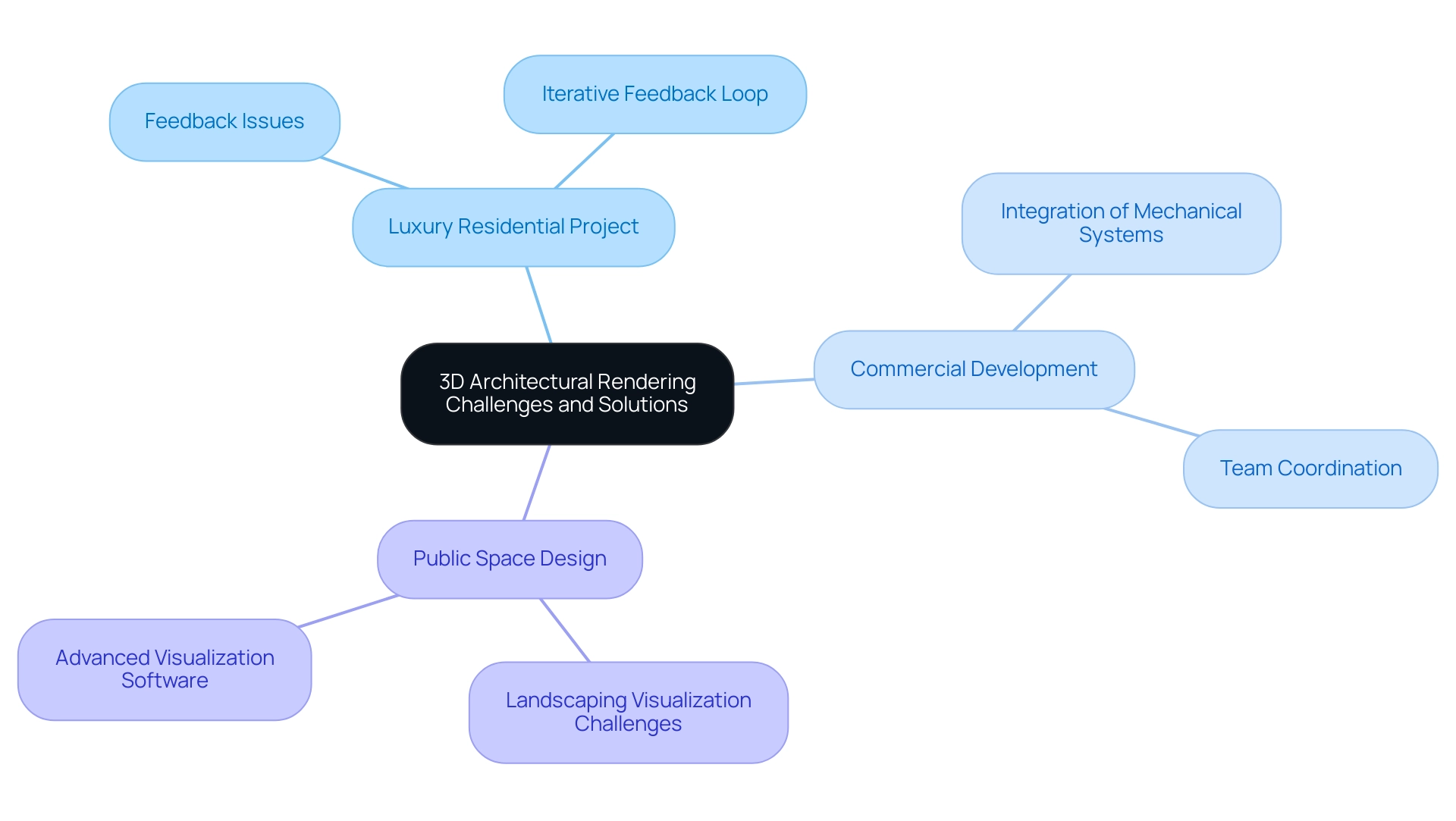
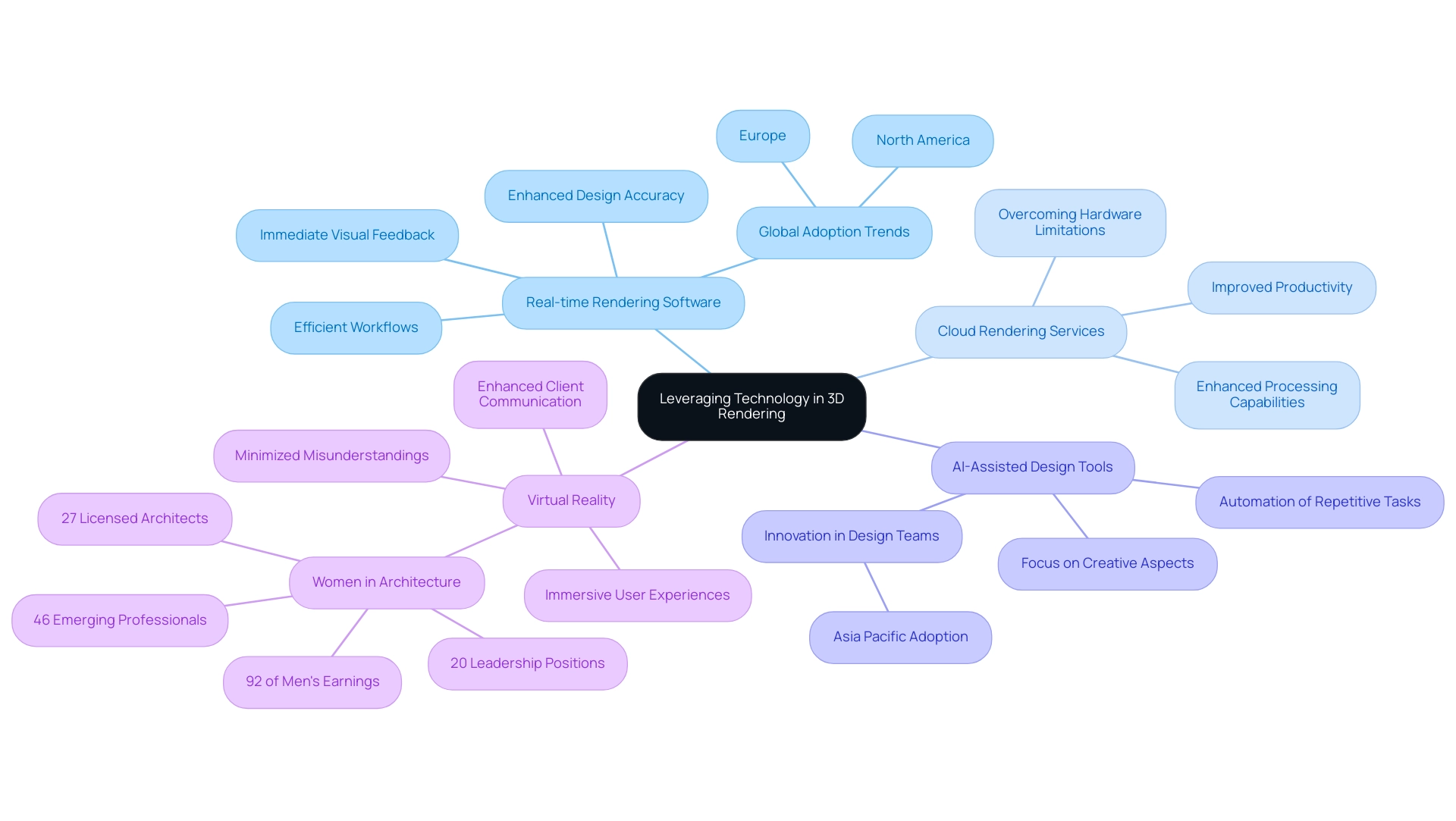
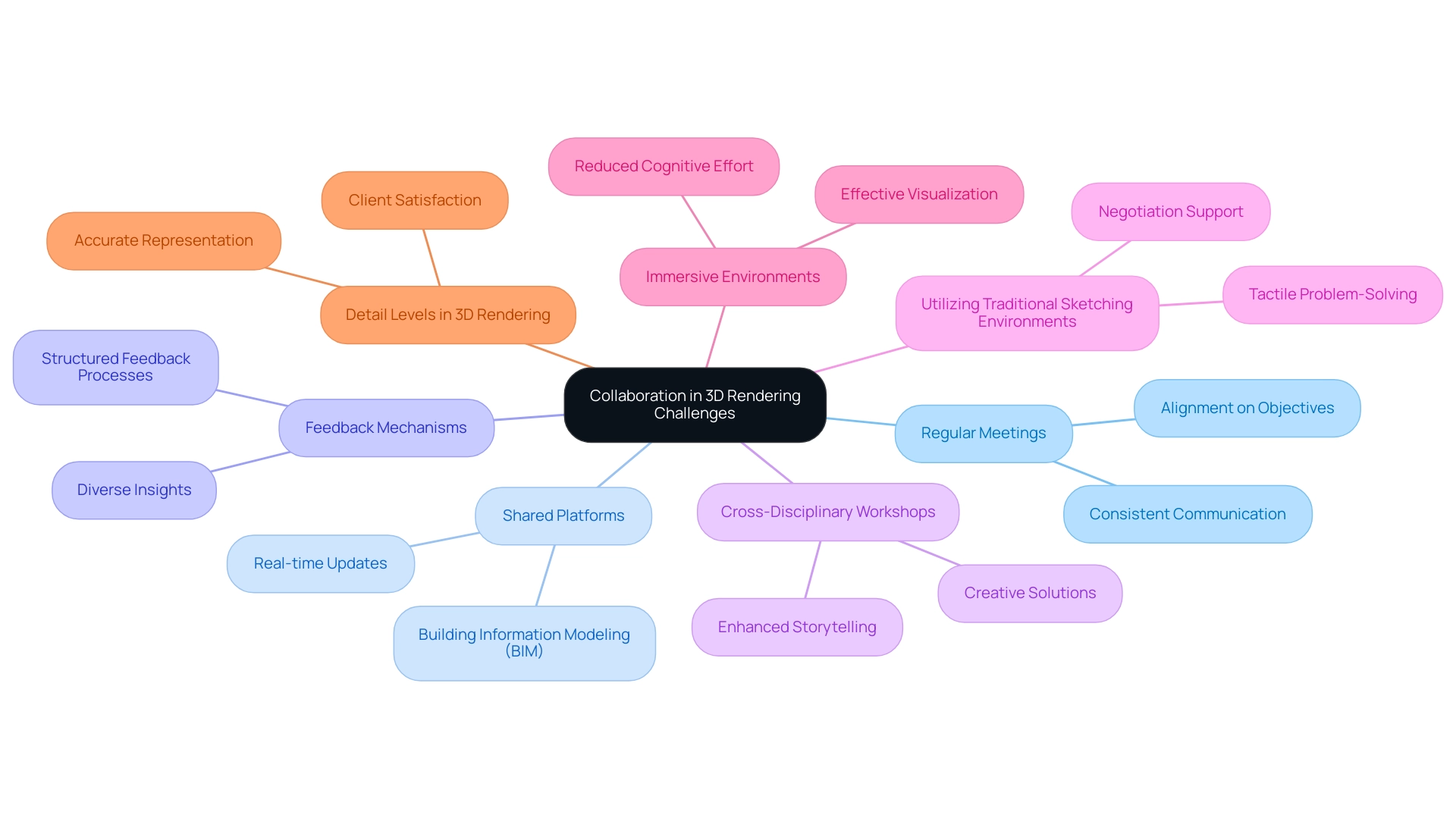
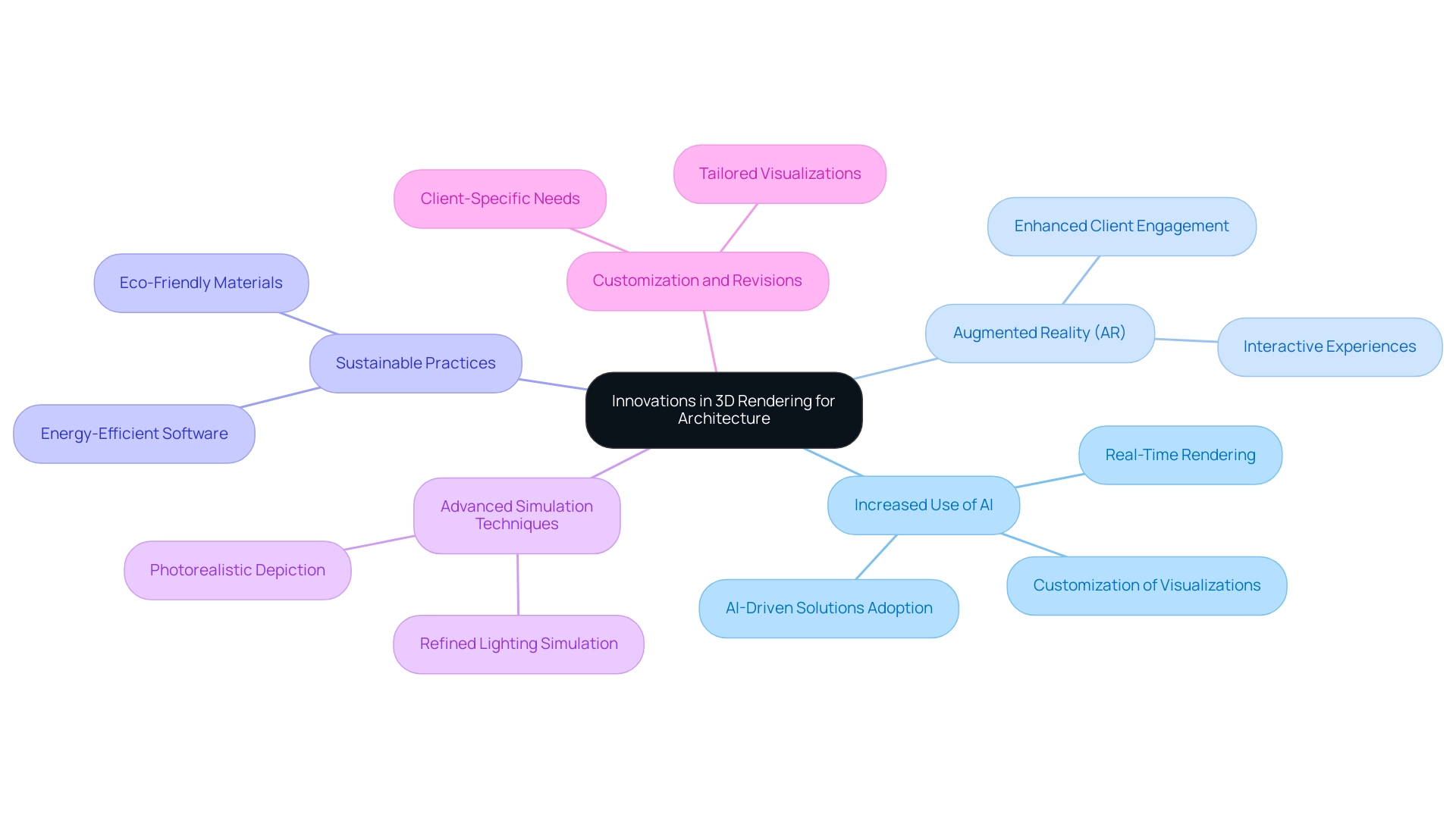
0 Comments